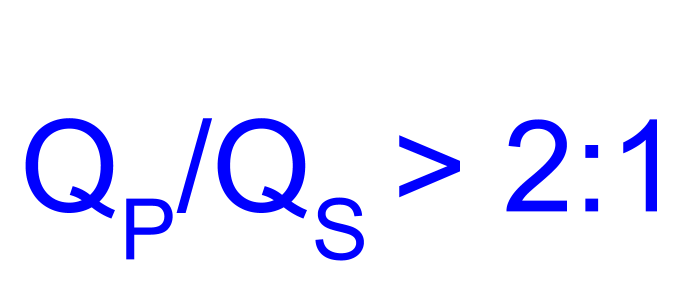Indicators of large left to right shunt
Indicators of large left to right shunt

Abstract: Indicators of a large left to right shunt are cardiac enlargement, presence of flow murmurs and third heart sound and a wide pulse pressure in case of patent ductus arteriosus.
Left to right intracardiac or extracardiac shunts typically increase the pulmonary blood flow. In a large left to right shunt, the Qp/Qs (ratio of pulmonary to systemic blood flow) is more than 2:1. Features of large shunts depends on the level of the shunt and also whether it is pre-tricuspid (before the tricuspid valve) or post tricuspid. The pre-tricuspid shunts are shunts at the level of great veins and at the atrial level. Post tricuspid shunts are either at the ventricular level or at the great artery level.
Features of large pre-tricuspid left to right shunt
Pre-tricuspid left to right shunts are due to either an anomalous drainage of pulmonary veins to the right side of the heart or an atrial septal defect. The flow into the right atrium, right ventricle and pulmonary artery are increased, leading to dilatation of all these chambers. Pre-tricuspid shunts seldom produce heart failure as the left ventricle is not affected. Tricuspid diastolic flow murmur and a right ventricular third heart sound are audible in case of large pre-tricuspid shunts. Pulmonary ejection systolic murmur due to enhanced flow is also universal in these situations and in fact more easily audible than the tricuspid flow murmur. Right atrial enlargement may be recognizable clinically by the rightward enlargement of the right cardiac border.
Features of post tricuspid left to right shunts
The classical post tricuspid shunts are ventricular septal defects and patent ductus arteriosus. Truncus arteriosus is a rare variety of post tricuspid shunt, which is less likely to manifest a large left to right shunt due to the early development of severe pulmonary hypertension, which reduces the magnitude of left to right shunt in spite of the large defect. Post tricuspid shunts cause left ventricular overload and failure in infancy. Flow murmur in the mitral area and left ventricular third heart sounds are heard in post tricuspid left to right shunts. A finding unique to a large patent ductus arteriosus is a wide pulse pressure due to the aortic run off.



